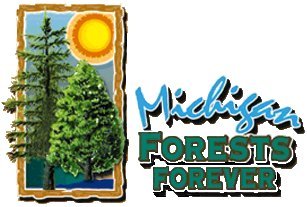

Home Page |
MICHIGAN FORESTS FOREVER TEACHERS GUIDE
| NUTRIENT & WATER CYCLES | 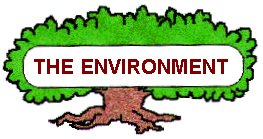 |
 |
Hydrologic Cycle Nutrient Cycles Soil Types, Particle Sizes, Textures |
 It is easy to get caught into the complexity
and chemistry of water and nutrient cycles. As with most things in the natural
world, multiple factors interplay with each to produce an immense array of
conditions. However, there are some fundamental factors and basic ideas that are
good to understand.
It is easy to get caught into the complexity
and chemistry of water and nutrient cycles. As with most things in the natural
world, multiple factors interplay with each to produce an immense array of
conditions. However, there are some fundamental factors and basic ideas that are
good to understand.
Return to the TOP of the Cycles Page
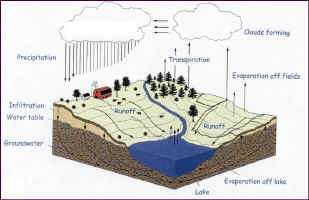 Image courtesy of the Michigan State University |
The hydrologic cycle is the natural sequence through which water passes into the atmosphere as water vapor, precipitates to Earth in liquid or solid form, and ultimately returns to the atmosphere through evaporation and transpiration. The biotic community is only one part of the cycle. The oceans also have large biotic communities (larger than terrestrial systems), mostly phytoplankton.
Scientists believe the total amount of water on Earth has remained unchanged for millions of years. They estimate the amount at 326 million cubic miles or about 358,026,240,000,000,000,000 gallons! [Owen, 1971]
Water moves about the Earth. Water movements, especially how they affect the biota, are called the "hydrologic cycle". At any one time, only about 0.005 percent of the supply is actually moving through the cycle [Owen, 1971], which is a LOT of water. This cycle is solar-driven. The three main theaters are land, air, and ocean. Water is stored in various reservoirs for various periods of time. Water in glacial ice has been there a long time. Water held by trees soon goes somewhere else. There are many connections between the reservoirs and processes described below. Measuring the relative importance of each helps define a particular ecosystem.
Reservoir |
Volume (cubic miles) |
Percent of Total |
Percent of Freshwater |
| Oceans Ice Groundwater Permafrost Lakes-fresh Lakes-saline Soil Moisture Atmosphere Swamps Rivers Biological Total |
166,520,000 5,774,000 5,614,000 72,000 21,800 20,500 4,000 3,100 2,800 500 300 332,546,000 |
96.5 1.74 1.7 0.022 0.007 0.006 0.001 0.001 0.0008 0.0002 0.0001 100.0 |
- 68.7 30.1 - 0.26 - 0.05 0.04 0.03 0.006 0.003 100.0 |
| Source: Gleick,
P.H. 1996. Note: Estimates of Earth's water and where it lies are difficult to make, especially for groundwater. This table shows a total amount different than cited by Owen, 1971. |
|||
Oceans hold about 97.2 percent of Earth's water. If the surface of the Earth were smooth, that's enough water to cover the entire surface under 800 feet of water.
Surface and Groundwater includes lakes, rivers, marshes, and the water in the soil and underground aquifers. This is the water that most people are directly concerned about, although it comprises only a tiny fraction of a percent of all the water on Earth. In the USA, we have over three million miles of rivers that carries 1.2 trillion gallons each day. Surface water satisfies about 80 percent of human needs for water. Groundwater may be closer to the surface in "water tables" or deeper down in rock strata called "aquifers". The speed of groundwater movement is much less than that of surface water, ranging from a few feet to a few miles each year. Contamination of groundwater is a serious matter because of the long time required to "flush" the system out.
The Great Lakes contain one-fifth of the world's surface freshwater, and Michigan has shorelines on four of the five big lakes! They contain 5,473 cubic miles of fresh water, or six quadrillion gallons. Note that this volume of water is only 0.00167 percent of Earth's water! Lake Superior holds the largest amount of water, more than the other four put together. The next largest Great Lakes, in terms of water volume, are Michigan, Huron, Ontario, and Erie. Click here for more information on the Great Lakes.
The atmosphere contains water that has evaporated, primarily from the oceans. The amount of atmospheric water is constant. If water didn't return to the oceans, they would lose 39 inches of water each year. This atmosphere is what keeps heat around the Earth, which would otherwise drop to temperatures around -300 degrees Fahrenheit.
The biota, or plants and animals, store and process water. However, the amount is only 0.003 percent of all freshwater, which is only a few percent of all water on Earth. Nevertheless, this is the water that we most directly concern ourselves with.
Precipitation is what brings water back to the Earth from the atmosphere. Nearly 90 percent falls back into the oceans. Precipitation (rain, snow, sleet, hail, fog, dew) is very unevenly distributed across the landscape and plays a critical role in the distribution of plants and animals. The average daily amount of precipitation in the USA is 4.3 trillion gallons. Enough precipitation falls in the USA in an average year to cover the surface of the country with 30 inches of water.
Evaporation moves precipitation right back into the atmosphere. Evaporation occurs from the surface of plants, from soils, and from oceans, lakes, and streams. Evaporation rates are higher in forested areas because of the huge amount of leaf surface area.
Transpiration is the process where plants move water from the soil to their above-ground parts, and then loses it to the atmosphere. One tree may transpire 100 gallons per day. An acre of corn might transpire 4,000 gallons in a day.
Evapo-transpiration is a combined term that includes both evaporation and transpiration. These processes send back 70 percent of annual precipitation in the USA.
|
Activity Suggestion PLT Water Wonders PLT Every Drop Counts Lessons About Water Use |
Return to the TOP of the Cycles Page
All minerals and nutrients cycle through soils and living systems. The amount available to plants and animals is what is important, not necessarily how much there is in the environment. The processes that influence the availability of nutrients vary from location to location and over time.
As mentioned in the tree physiology section, the most common minerals of life are carbon, hydrogen, oxygen, phosphorus, potassium, nitrogen, sulfur, calcium, iron, and magnesium. You might be able to remember this by a jingle formed using the abbreviations for these elements: C H O P K N S Ca Fe Mg . . . "see hopkins café, mighty good." Usually, the most limiting minerals are nitrogen, phosphorous, and potassium. These are the three main ingredients of most fertilizers. Decomposers (bacteria and fungi) play a critical role in keeping nutrients within the living system and slowing losses to the open cycles we find in north temperate zones.
The primary reservoir of phosphorus and potassium is the soil. As rock is weathered, soil particles are formed, and minerals become available to plants. Weathering is affected by factors such as freeze-thaw events, pH (scale of acidity), wind and water movement, and actions by plants. Phosphorus and potassium are converted to "organic" forms that can be absorbed and utilized by plants.
The primary reservoir of nitrogen is the atmosphere. Nitrogen must be converted from atmospheric forms to forms that plants can use. This process is called "nitrogen-fixing" and is largely done by certain forms of bacteria and algae. Certain groups of plants, especially those in the legume family, have specialized root nodules containing nitrogen-fixing bacteria in a symbiotic relationship. Lightning fixes some amounts of nitrogen. Annual nitrogen fixation averages between one and six pounds per acre [Odum, 1971]. There are several forms of nitrogen, but it is the nitrate form that is useable to plants.
Two dominant factors in nutrient availability are water and pH. Most chemical forms of nutrients available to trees are in a soluble state, meaning they dissolve in water. As water moves through and across soils, it carries valuable nutrients. As a landscape captures water, so too, will it capture many of the nutrients dissolved in the water. This is the very important connection between the hydrologic cycle and nutrient cycles.
pH is simply a scale that measures the acidity and alkalinity of water solution. Some say that "pH" stands for the "power of hydrogen". The scale runs from 0 to 14, with low numbers being acid and high numbers being alkaline. Seven is neutral. Most soils exist in a natural state of acidity. As a soil pH changes, so does the chemical forms of many nutrients. A change in pH may work to the benefit or detriment of plants on a particular soil type, depending upon the soil type. Most forest soils would actually become more productive with moderate decreases in pH (more acidic). Soils can be "buffered" against changes in pH if they have higher levels of carbonates. Carbonates "absorb" the ions that cause pH change until their capacity is used up. So, a soil rich in carbonates would require large amounts of inputs to affect a change. Alternatively, poorly buffered soils may experience changes in pH with relatively low levels of inputs.
Aquatic systems operate in a similar way. Lakes in granitic basins tend to have lower pH values, lower biological productivity, and are much more vulnerable to drops in pH with the addition of acid inputs. Lowered pH in these sensitive lakes can have negative consequences on the biota of the lake. This was one of the principal concerns with "acid rain". However, most lakes tend to have fairly substantial buffering capacities.
|
Activity Suggestion PLT Every Tree For Itself PLT Soil Stories |
Return to the TOP of the Cycles Page
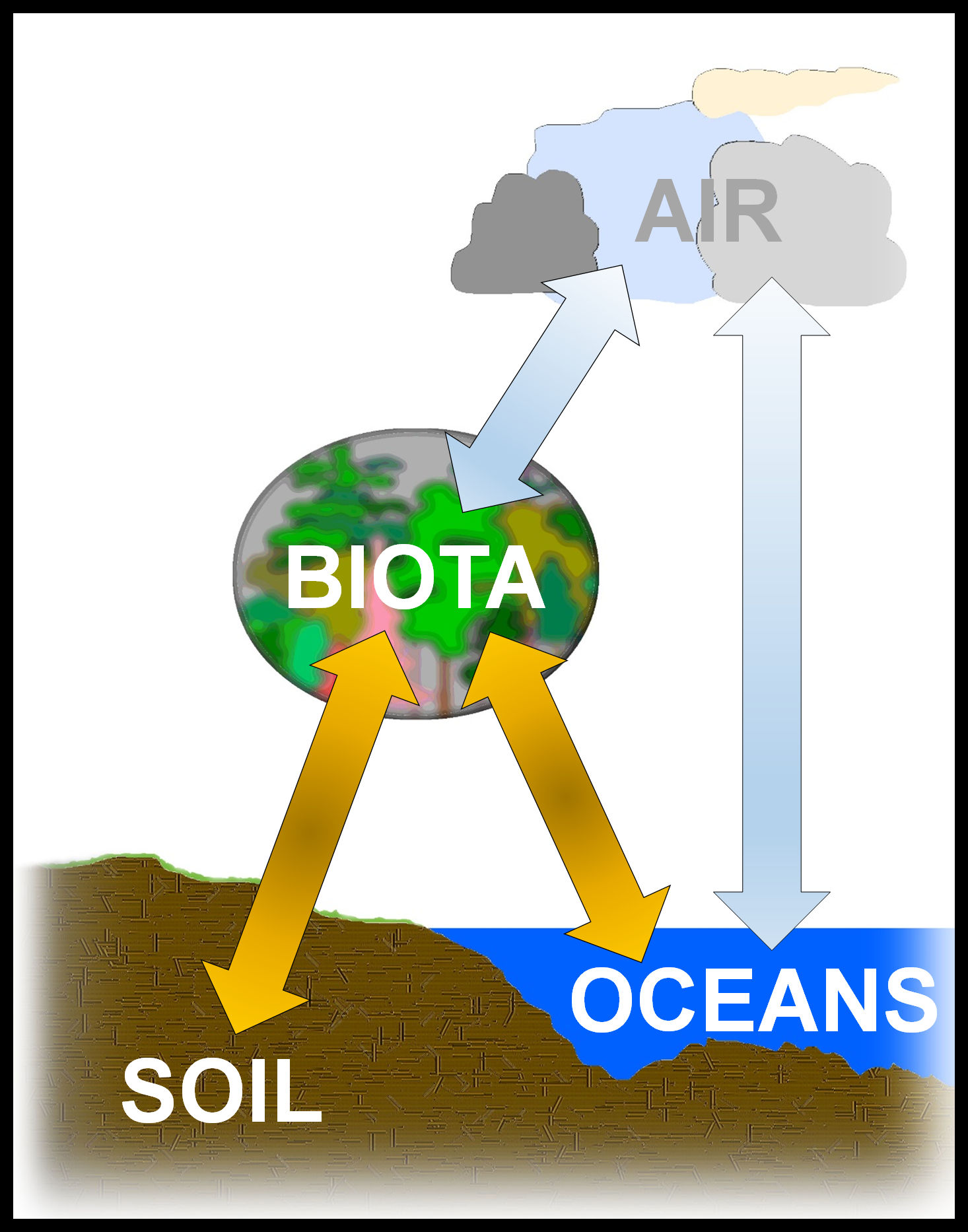 Even though carbon is a huge element of all living things, it is not a limiting factor. However, due to the harmful impacts of fossil fuel carbon additions to the cycle, a basic understanding of the carbon cycle is useful. Fossil carbon is not part of the carbon cycle. Therefore, it's introduction has grown increasingly problematic to Earth's climate systems.
Even though carbon is a huge element of all living things, it is not a limiting factor. However, due to the harmful impacts of fossil fuel carbon additions to the cycle, a basic understanding of the carbon cycle is useful. Fossil carbon is not part of the carbon cycle. Therefore, it's introduction has grown increasingly problematic to Earth's climate systems.
There are various pools of the carbon cycle; soils, oceans, atmosphere, and the biota. The relative sizes of these pools varies with the seasons and other factors. Carbon moves back and forth among the pools at different rates. Biotic carbon, the tissues of plants and animals, is a fairly small pool. However, within that pool, the role of trees and forests is significant. Trees (wood) are largely made-up from carbon and oxygen pulled from the atmosphere. One of major inputs to photosynthesis is CO2. As a plant respires, carbon and oxygen are used as building blocks of new tissues, in addition to the stored energy that is released with respiration.
Forests are important sequesters of carbon. Forests put carbon into wood, the soil, and many long-term (and short-term) forest products. U.S. forests sequester up to a fifth of the CO2 emissions generated. On a landscape basis, over time, managed forests sequester more carbon than unmanaged forests, despite larger carbon pools in "old growth" forest. An increasing amount of research supports this controversial idea. A crucial caveat of this process is that forests must remain as forests, rather than converting them to other land uses. Fortunately, worldwide, forest area appears to be on the increase (Yirka 2018). This not the case everywhere, such as in the Amazon or Indonesia, but it is true for North America. Although, this may change within the next few decades.
Burning forest biomass to generate heat and electricity does not significantly alter the carbon cycle because forest carbon is already a part of the cycle. You can burn trees for fuel for a thousand years, or a million, with no increase in carbon within the carbon cycle. It IS true that, compared with wood, burning fossil fuel may produce less CO2 for the amount of energy received, but that is irrelevant when looking at the complete carbon life cycle and how the planet moves carbon from pool to pool. This website has a curriculum module exploring wood-based energy.
Soil Types, Particle Sizes, and Soil Textures
According to the Natural Resource Conservation Service, there are about 475 soil types in Michigan. A soil type is defined by characteristics such as soil structure, moisture, soil genesis, particle size, and texture. Different soils are capable of producing certain levels of biological productivity, or so much biomass per year. Soil is one of the foundations of forest ecology. Because soil takes thousands of years to develop, conservation of soils is critical. Recovery from land abuse and excessive erosion cannot be easily overcome. There are many historical examples of collapsed societies due, at least in part, to abusive land practices. For a classic 28 page paper on the topic, click on Lowdermilk.
"Soil texture" determined by the relative composition of soil particle sizes. There four soil particle size classes.
Most soils have a combination of soil particles sizes. There is usually a component of "organic matter", which is derived from decomposing plant and animal remains. A "loam soil" is a mix of sand, silt, and clay that optimizes agricultural productivity. The texture of a soil determines much about the water retention properties. A "coarse or light soil", mostly sand & gravel, has large pore spaces and allows water to easily run through it, beyond the reach of roots. These soils tend to be drought-prone. Additionally, sand and gravel have relatively little surface area for the particle volume, reducing the potential for nutrient weathering. A "fine or heavy soil" has large components of silt and clay, making it "muddy" when wet. Pore spaces are smaller and hold more water. However, when clay soils begin to dry, they may still hold large quantities of water, but due to the small particle size and adhesive & cohesive properties of water, most of it will be unavailable for root uptake.
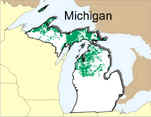 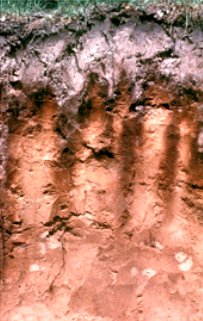
Soil profile of a Courtesy of the NRCS |
The rock or original source of soil particles is called "parent material". The nature of parent material has a lot to do with soil quality. Glacial outwash sands tend to be rather infertile, or hold few minerals and nutrients important for tree growth. Soils derived from other sources may be relatively rich in minerals and nutrients. Usually a combination of weathered parent materials (often re-worked by glacial action in Michigan) and organic matter make a soil. Weathering or erosive actions include those from heating/cooling, freezing/thawing, glaciers, water, wind, chemistry, and plants & animals.
A "soil profile" is a look at the layers of soil in a particular place. Each layer is called a "horizon". The A-horizon usually contains most of the organic matter and soil goodies. It is usually thin, maybe a few inches or less. The B-horizon contains much of the nutrients that are leaching out of the A-horizon. It generally lacks any organic matter. Accumulations of iron or other minerals may create "hardpan", which is a feature that water and roots have difficulty penetrating. The C-horizon is raw soil, weathered parent material. This horizon defines a soil's mineral and acidic properties. A granite-based soil will be acid and weather slowly. A limestone-based soil will be much more alkaline and weather rather quickly. The D-horizon is unweathered rock formed from basic geological processes such as volcanism and sedimentation.
The
U.S. Department of Agriculture, Soil Conservation Service publishes detailed
soil surveys for each county. These documents are rich sources of information
about not only soils, but other information as well. The soil surveys are
available at no cost. On-line soil maps are also available through the USDA
Natural Resource Conservation Service at [http://websoilsurvey.nrcs.usda.gov/app].
|
Activity Suggestion Soil Texture by Feel |
 |
This website was developed and created by Michigan State University Extension for the teachers of the State of Michigan. |
Page Name:
Environment/Cycles.htm